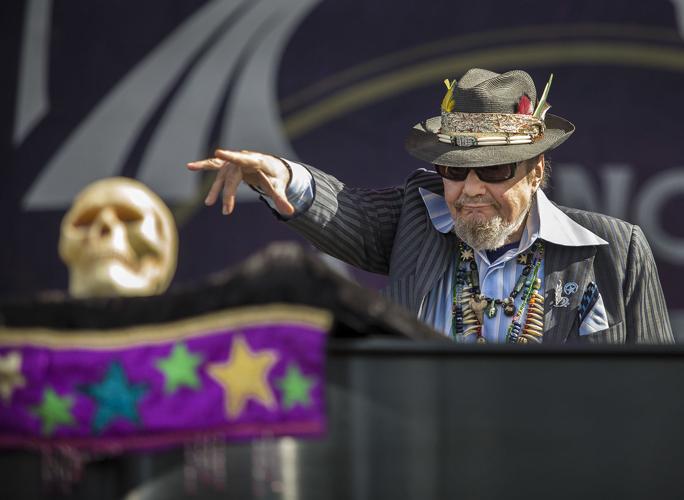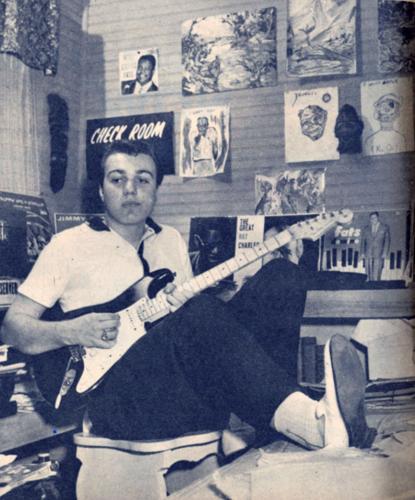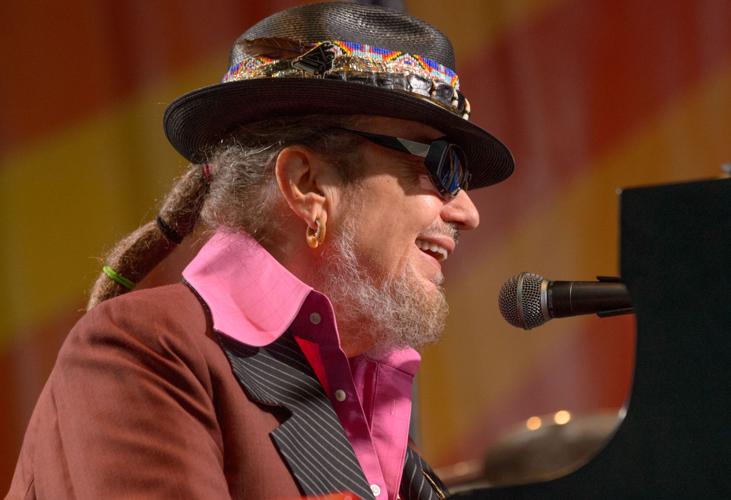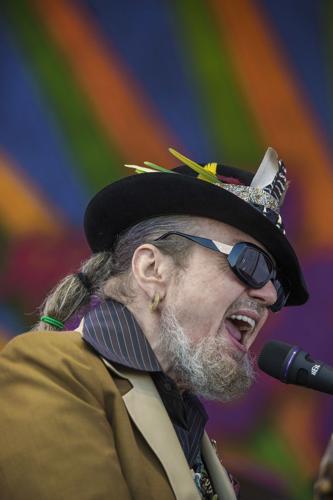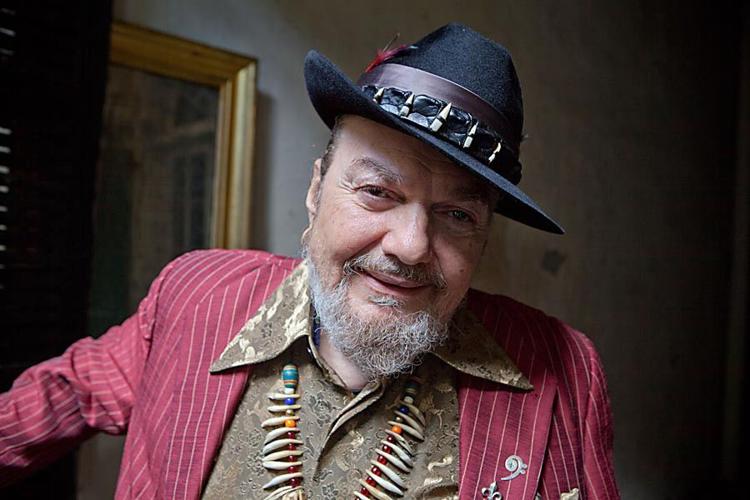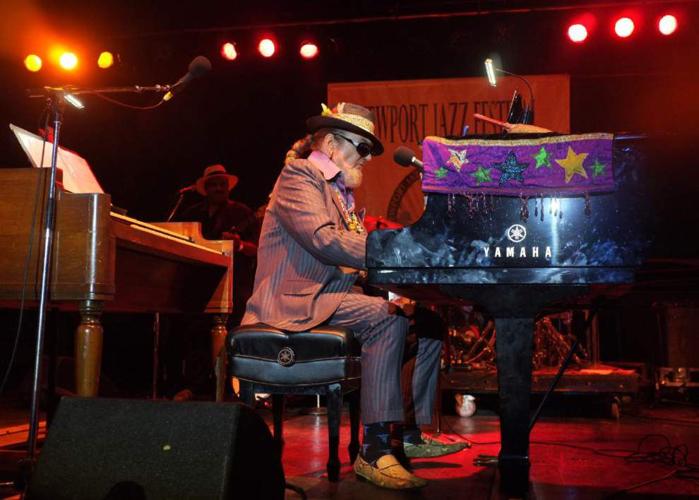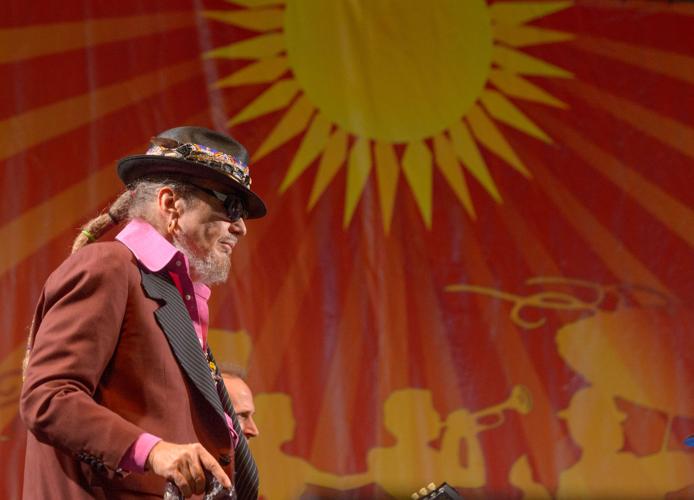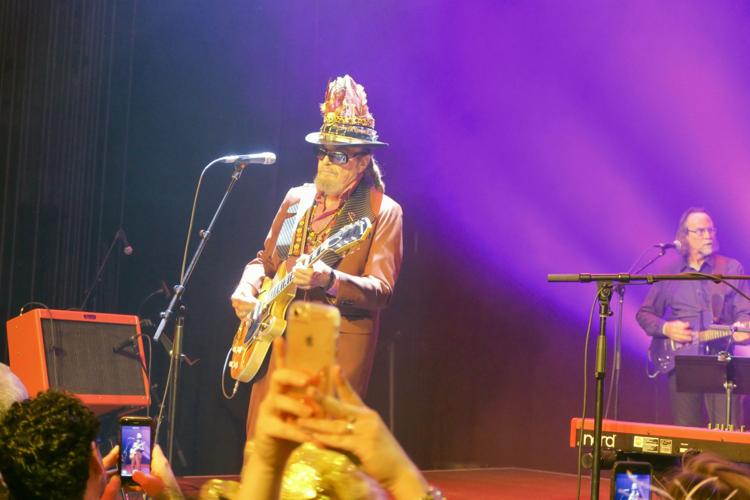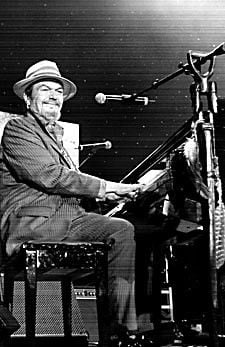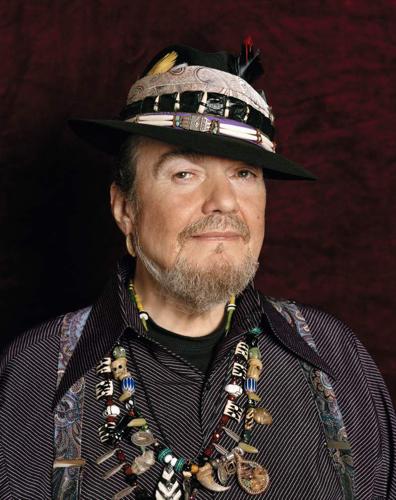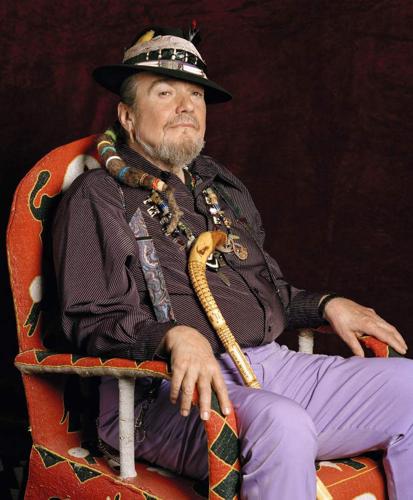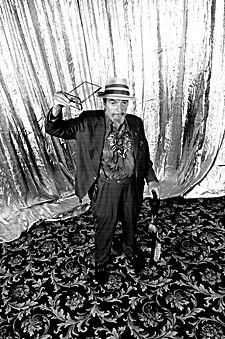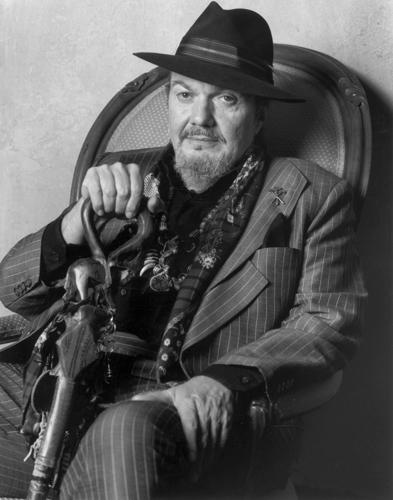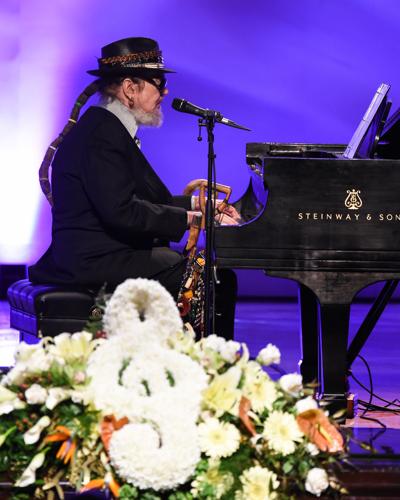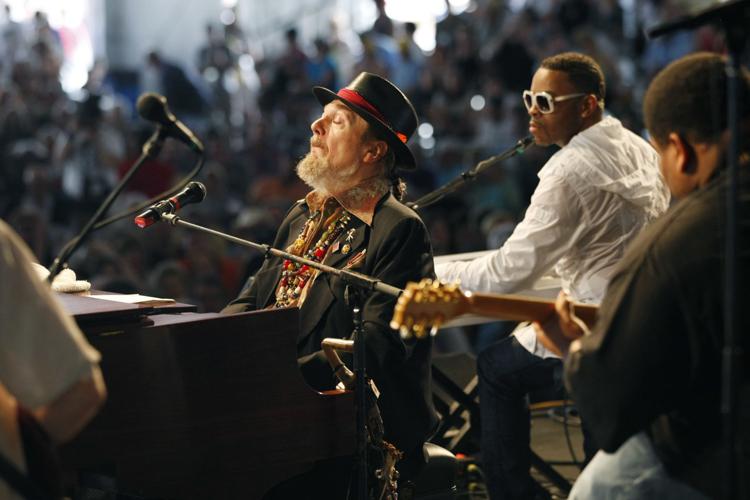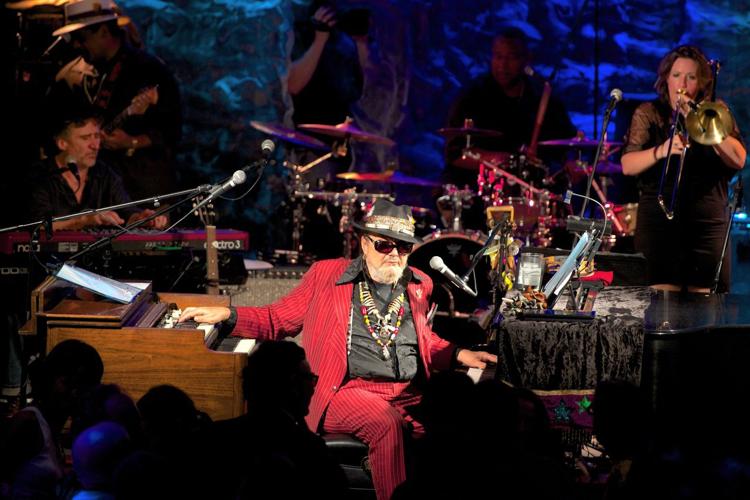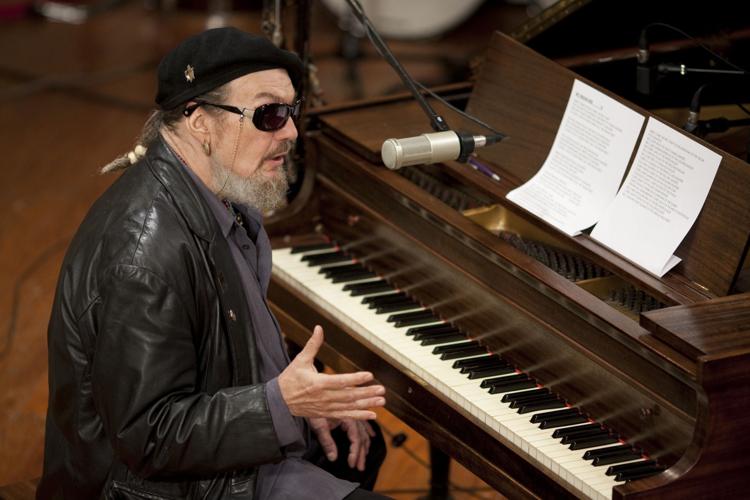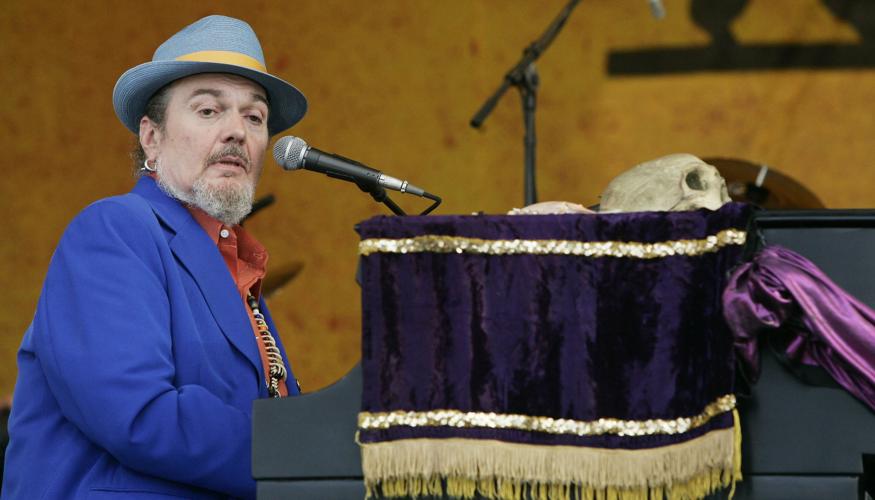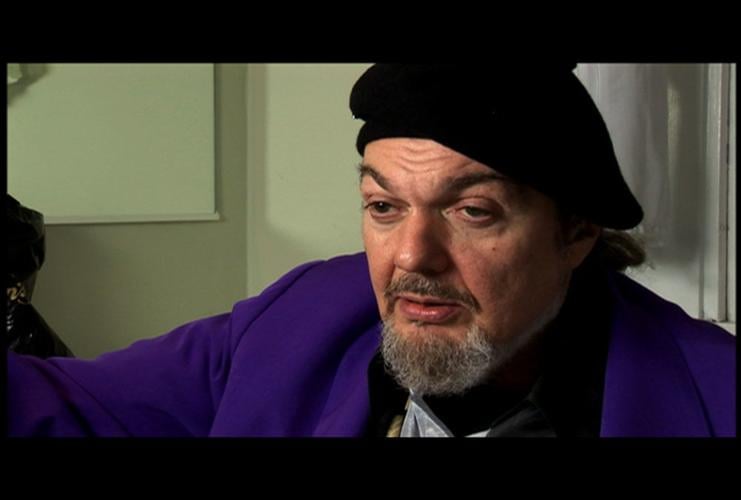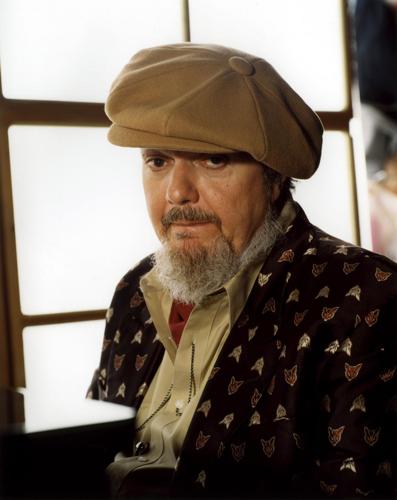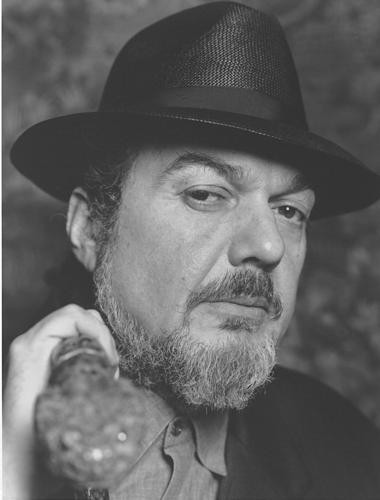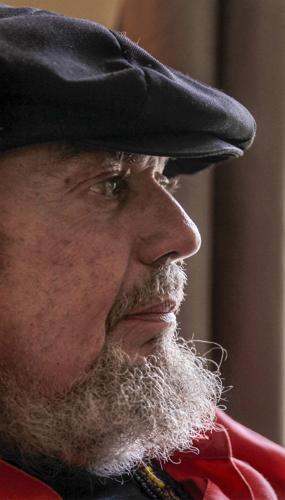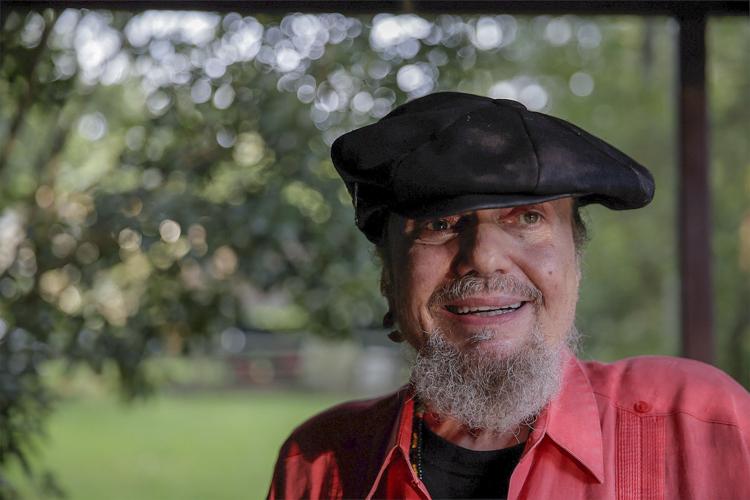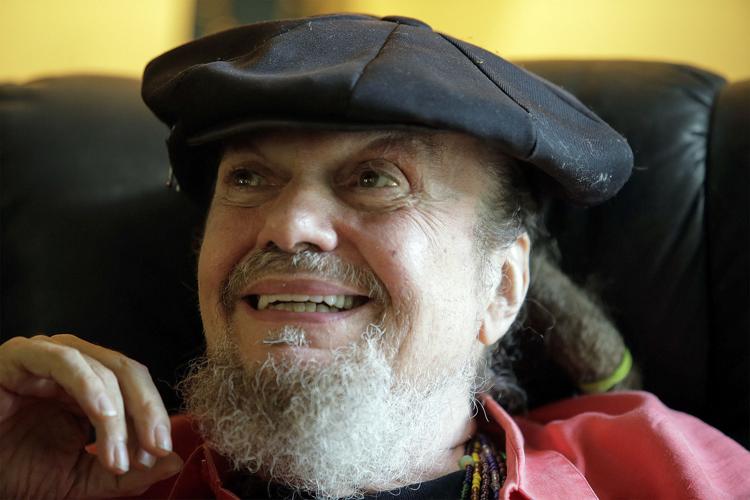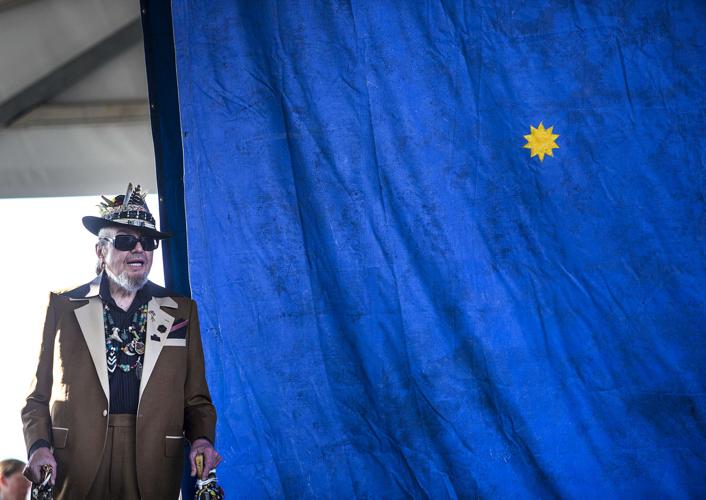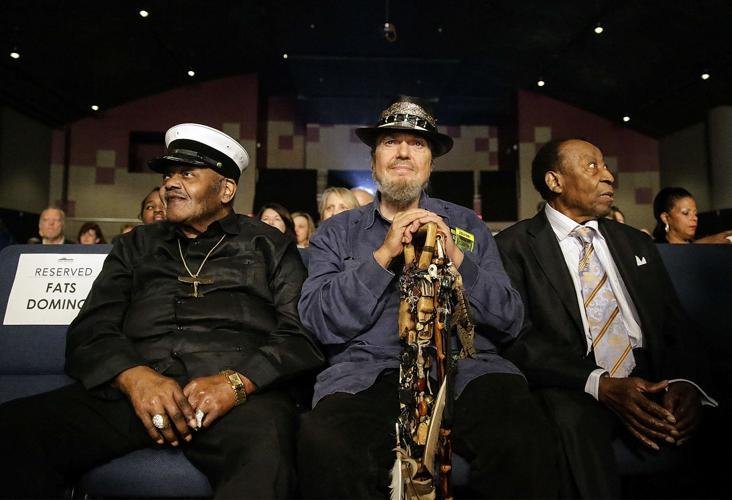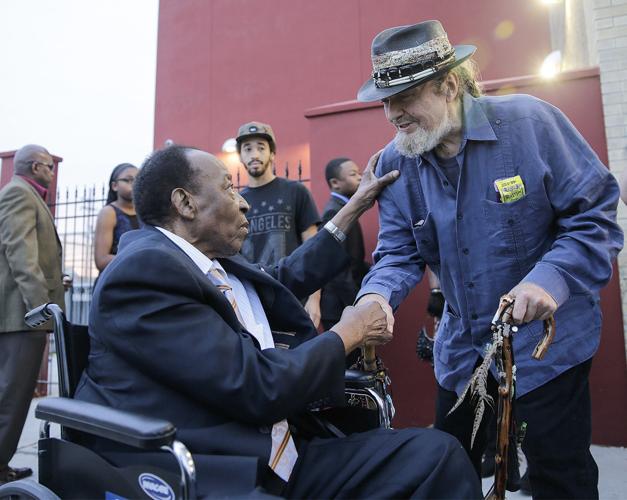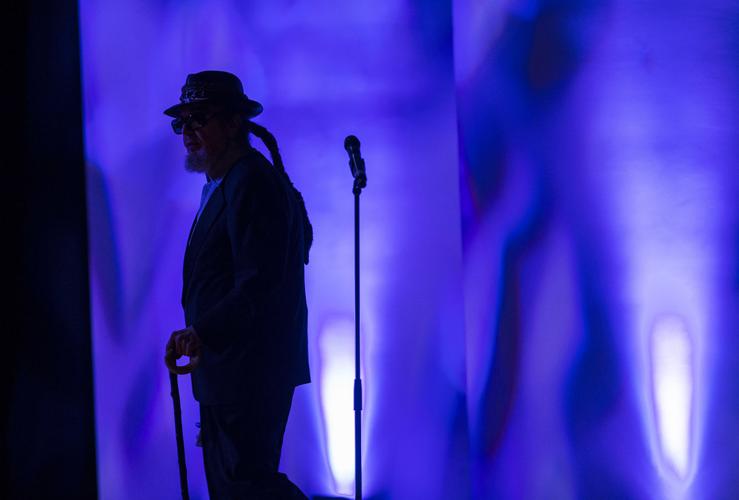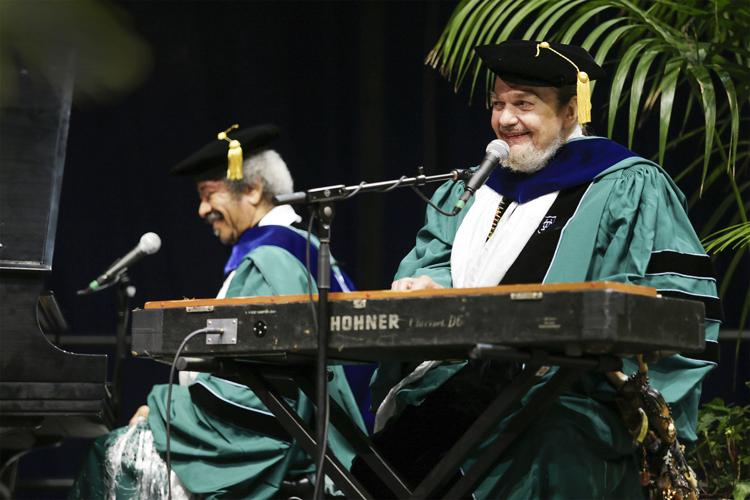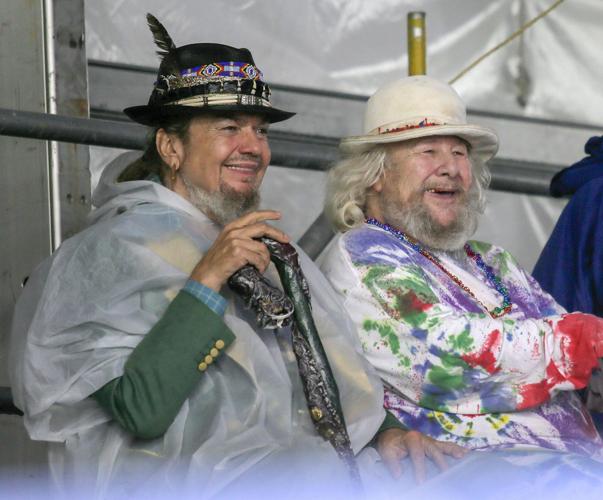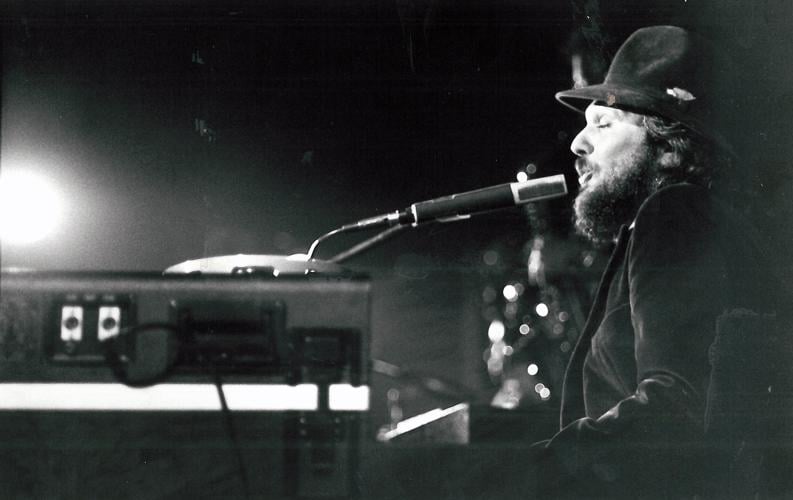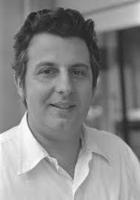Malcolm John Rebennack Jr., known around the world as Dr. John, initially aspired to be a professional songwriter, producer and sideman, like the utilitarian New Orleans musicians who forged his creative worldview in the 1950s. He wanted to work behind the scenes, not out front.
But after assuming the persona of Dr. John the Night Tripper in the late 1960s, Rebennack was behind the scenes no more. His idiosyncratic style and sound – the gravelly growl, the sly, deceptively leisurely phrasing, the original hipster patois, the hybrid Big Easy piano – embodied New Orleans and its music.
Rebennack, an icon of the city who remained an active creative force until he abruptly disappeared from public view 18 months ago, died Thursday of a heart attack after years of declining health, a family member confirmed. He was 77.
Photos: Remembering 'Dr. John' Rebennack -- a look at the New Orleans music legend's prolific career
Sainthood is not required for rock immortality. As chronicled in interviews and his "Under a Hoodoo Moon" autobiography, Rebennack, in his younger years, was gangsta to a degree that would likely shock Lil Wayne.
But over the course of a remarkable life and career, he evolved. From addiction to three decades of sobriety. From sordid escapades as a dealer and pimp to Disney soundtracks and the model for sleepy-eyed, jive-talking Muppet musician Dr. Teeth. From hometown outcast to one of its most outspoken advocates and beloved characters.
And he experienced a remarkable late-career resurgence thanks to a cross-generational collaboration that took him out of his New Orleans comfort zone and tapped into the Night Tripper aesthetic of old.
Born Nov. 20, 1941, at Baptist Hospital, Rebennack grew up in New Orleans’ 3rd Ward. By the time he was a student at Jesuit High School, he was already hanging around New Orleans rhythm & blues recording sessions as a burgeoning guitarist and songwriter.
Even as he built a reputation as a formidable musician, he fell into a spiral of addiction and petty crime. A gunshot during a nightclub brawl damaged one of his fingers. As a result, his focus shifted from guitar to piano.
In the mid-1960s, he served time in a Texas prison program for drug addicts. After his release in 1965, he joined a community of expatriate New Orleans musicians in Los Angeles.
They included Harold Battiste, the noted producer and arranger who was Sonny & Cher’s musical director. Battiste gave Rebennack studio work, and also helped him shape a musical project that would be named for Dr. John, a figure from New Orleans’ voodoo past.
Initially, Rebennack was to be the behind-the-scenes bandleader; a vocalist named Ronnie Barron was the intended front man. But Barron dropped out and Rebennack, somewhat reluctantly, moved to the forefront.
"I never liked front men," he recalled in 2011. "I never felt any different after I became one. The idea of what front men become is kinda obnoxious."
Neither was he convinced that his voice was suited for singing. "I said, 'Whaddya mean me? I can't sing.' And (Battiste) said, 'Look, if Bob Dylan and Sonny and Cher can sing, you can sing.' I thought it would be a one-off deal and then I'd go back to producing records. It didn't happen."
In January 1968, Atco Records released his debut album, “Gris-Gris.” On the album cover, Rebennack was billed as “Dr. John, the Night Tripper”; his songwriter credits inside identified him as “Dr. John Creaux.”
Recorded in Los Angeles with Battiste producing, “Gris-Gris” was a spooky synthesis of New Orleans music and psychedelic rock. It concluded with “I Walk on Guilded Splinters,” one of his signature songs. Decades later, Rolling Stone magazine would name “Gris-Gris” one of the 500 best albums of all time.
In the late 1960s and early ’70s, Rebennack fully embraced the voodoo trappings of his Night Tripper persona. Onstage, he wore elaborate headdresses and was sometimes accompanied by a live snake. He scattered glitter from a pouch, much to the chagrin of Gregg Allman, who once recalled having to clean the "magic dust" from his keyboards after sharing a bill with Dr. John.
On his landmark 1972 album “Dr. John’s Gumbo,” he demonstrated an affinity for New Orleans rhythm & blues classics. His 1973 album “In the Right Place,” produced by Allen Toussaint and featuring the Meters as Rebennack’s backing band, yielded two of his signature songs: “Right Place, Wrong Time” and “Such a Night.” 1974's "Desitively Bonnaroo" inspired the name of Tennessee's Bonnaroo festival, one of the biggest music festivals in the country.
Rebennack wrote and recorded essential chapters in the New Orleans music canon. Over the years, he became one of the city's most enduring, respected and iconoclastic musicians and cultural figures. He was a prominent member of the pantheon of New Orleans piano legends, part of a direct lineage that included Fats Domino, Professor Longhair, Huey “Piano” Smith, Allen Toussaint and Art Neville.
His band the Lower 9-11, especially when powered by the late drummer Herman Ernest, dealt in stone-cold New Orleans funk. He recorded albums in tribute to Duke Ellington, Louis Armstrong and songwriting great Johnny Mercer. He scored a hit via his "Makin' Whoopee!" duet with Rickie Lee Jones.
His body of work is inextricably bound to the city that raised him, nearly ruined him and then finally took him back. On his ambitious 1992 album “Goin’ Back to New Orleans,” he captured the breadth and depth of the city’s sound, from Mardi Gras Indian chants to funk to jazz to rhythm & blues. He enlisted a who’s who of local contributors for the recording, including the Neville Brothers, Pete Fountain, Al Hirt and Danny Barker.
In his later years, he lent his distinctive voice to varied endeavors. He sang “Down in New Orleans” on the soundtrack of Disney’s animated film “The Princess and the Frog.” His movie and TV credits also included the theme song for PBS' animated “Curious George” TV show and a version of “The Bare Necessities” for Disney’s 2016 remake of “The Jungle Book.” He performed a popular “love dat chicken” jingle for Popeyes Chicken & Biscuits.
Hurricane Katrina reawakened his sense of social responsibility. He vented his outrage at official ineptitude and negligence from the stage and on the Grammy-winning CD "City That Care Forgot." After the Gulf of Mexico oil spill in 2010, he led protests and railed against BP.
In 2011, he was inducted into the Rock ’n’ Roll Hall of Fame alongside Neil Diamond, Alice Cooper, Tom Waits, Leon Russell and ’60s girl group singer Darlene Love. He joined fellow New Orleanians Fats Domino, Dave Bartholomew, Allen Toussaint, Lloyd Price, Jelly Roll Morton, Professor Longhair, Louis Armstrong and Mahalia Jackson in rock’s official shrine.

Dr. John, aka Mac Rebennack, and the Nite Trippers perform on the Acura Stage on the second Saturday of Jazz Fest in New Orleans, La. Saturday, April 30, 2016.
The following year, he released “Locked Down,” one of the most acclaimed albums of his career. As the album's producer, Dan Auerbach of the rock duo The Black Keys sought to strip away layers of cliché and routine to unearth the real Mac Rebennack.
Recording in Auerbach's Nashville studio, he paired Rebennack with a band of young, invigorated musicians and encouraged him to take on unfamiliar songs and write new ones. Auerbach also persuaded Rebennack to play electric keyboard instead of piano, which altered the entire complexion of the music.
The New York Times, Los Angeles Times, Chicago Tribune, Wall Street Journal and National Public Radio, among many other media outlets, hailed “Locked Down” as a masterpiece. Rolling Stone awarded it four out of five stars. It won Rebennack his sixth Grammy Award.
He performed at the White House and at a Super Bowl. Indicative of his hallowed status in the larger world of popular music, a tribute concert in his honor at the Saenger Theatre during the 2014 New Orleans Jazz & Heritage Festival featured a procession of luminaries singing his songs.
Barely two hours after performing at Jazz Fest, Bruce Springsteen joined Rebennack at the Saenger to open the show with "Right Place, Wrong Time." In a sense, Springsteen was returning a favor: Rebennack had guested with the E Street Band during the 2012 Jazz Fest.
Others who performed in his honor that night included John Fogerty, the Blind Boys of Alabama, Mavis Staples, Jimmie Vaughan, Widespread Panic, Jason Isbell, Grateful Dead drummer Bill Kreutzmann, Rolling Stones keyboardist Chuck Leavell – who cut his teeth in Rebennack's band – and local luminaries Toussaint, Aaron and Cyril Neville, Irma Thomas, Terence Blanchard and Anders Osborne.
As recently as 2017, Rebennack logged nearly three dozen performances across the country, including dates with the Avett Brothers at Red Rocks amphitheater near Denver and at the Greek Theater in Los Angeles. He also played several shows on a tour marking the 40th anniversary of The Band’s “Last Waltz” farewell concert (he was part of the original “Last Waltz”). In April 2017, he sat in with fellow New Orleanian Jon Batiste’s band on “The Late Show with Stephen Colbert.”
During the 2017 Jazz Fest, he performed on the main Acura Stage on the fest’s first Sunday. The day’s earlier acts were washed out by thunderstorms, but Rebennack, resplendent in a green suit, was unruffled by the turbulent weather.
Can't see video below? Click here.
He fronted his revamped Nite Trippers, a band consisting of New Orleans drummer Herlin Riley, bassist Roland Guerin, guitarist Eric Struthers, organist Joe Ashlar, trumpeter Leon "Kid Chocolate" Brown and guest saxophonist Charles Neville. They closed their set with an epic “Big Chief” and a salacious “Such a Night.” Rebennack then strutted offstage, grinning, surround by a trio of scantily clad young ladies.
That turned out be the final Jazz Fest show for both Rebennack and Charles Neville, who died the following spring of cancer.
By late 2017, there were signs that Rebennack’s health was deteriorating. Over the years, he had battled a litany of medical issues, including bone spurs in his neck — the result, he believed, of years spent on methadone — arthritis and carpal tunnel syndrome.
On Oct. 25, 2017, he taped a tribute to Domino during the “Austin City Limits” Hall of Fame Induction celebration in Texas. Onstage with Elvis Costello, Troy “Trombone Shorty” Andrews and members of the Neville Brothers' backing band, Rebennack seemed to have trouble navigating his piano and vocal parts on Domino’s “Ain’t That a Shame.”
A week later, on Nov. 2, 2017, he celebrated his birthday with a lunchtime reception at the Napoleon House in the French Quarter. Later that evening, he materialized on the stoop of Fats Domino’s old house in the Lower 9th Ward at the conclusion of a memorial parade in honor of the recently departed Domino, a friend and inspiration.
That was Rebennack’s last public appearance. His annual holiday season performances at Tipitina's that December were canceled.
He reportedly spent the past year and a half living quietly on the north shore, even as his team maintained his Twitter account with a steady stream of vintage photos, footage and milestones.
“What goes around slides around, and what slides around slips around,” Rebennack said 2011, just before his Rock ’n’ Roll Hall of Fame induction. “As long as it’s slippin’ and slidin’ around, we ain’t got to trip through the shortcuts of life. We can take the long way around. It’s the shortcuts that kill you.
“The best thing you can be ‘like’ in music is yourself.”
And there was no one else like him.
Funeral arrangements are pending.
In New Orleans, Leah Chase has long been lauded as a leader, an inspiration, even an emblem of her city’s better self.
Charles Malachias, who ran the French Quarter restaurant Café Maspero for 43 years, died Sunday at his New Orleans home from complications of …

